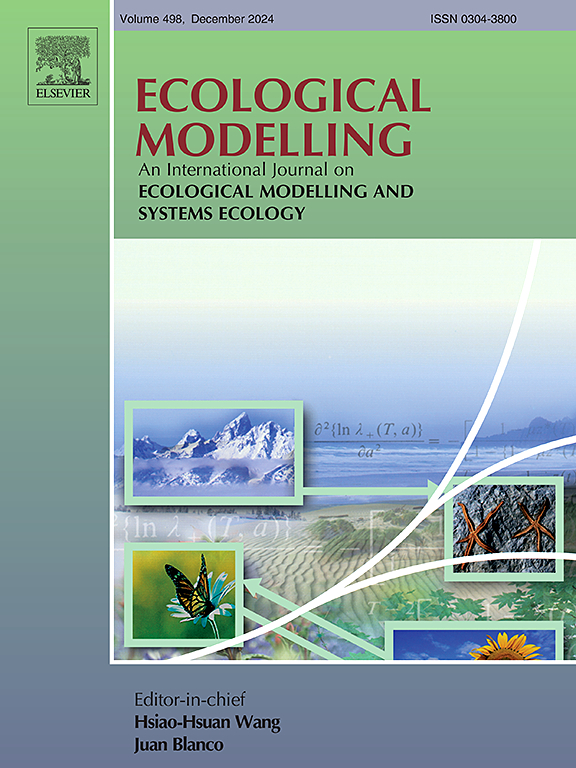Drivers of aboveground biomass in Quercus wutaishanica Mayr forests based on random forest and structural equation modeling: A cross-scale analysis
IF 2.6
3区 环境科学与生态学
Q2 ECOLOGY
引用次数: 0
Abstract
A comprehensive understanding of vegetation biomass is essential to gain deeper insights into the global carbon cycle. Quercus wutaishanica Mayr forests are the dominant and established species in temperate deciduous broad-leaved forests in China. They play a significant role in the ecological functions and carbon sequestration of forests. At present, the drivers and influencing mechanisms of aboveground biomass (AGB) of Q. wutaishanica forests have not been clearly quantified across different scales. In this study, we examined the effects of abiotic factors, encompassing climatic conditions and soil properties, and biotic factors that involve grass coverage and forest age, and disturbances on the AGB of Q. wutaishanica forests at overall and 15 vegetation regionalization scales in China using random forest (RF) and piecewise structural equation modeling (piecewiseSEM). The results from the RF model and piecewiseSEM explained 68 % and 47 % of the variance in AGB, respectively, at the overall scale. Climatic factors represented by temperature seasonality (TS) and climate moisture index (CMI) primarily shaped community biomass patterns overall. These factors affected AGB directly and indirectly by influencing edaphic and biotic factors, respectively. In addition, the AGB was mainly constrained by significant seasonal temperature variations or inadequate moisture. The direct effect of biotic factors, specifically forestage and grass coverage, on AGB was more pronounced at the regional than at the overall scale. The dominant factors in the adjacent vegetation zones exhibited a degree of geographical continuity. These findings represented an essential reference for carbon cycling mechanisms within terrestrial ecosystems.

基于随机森林和结构方程模型的五台山栎林地上生物量驱动因素的跨尺度分析
全面了解植被生物量对于深入了解全球碳循环至关重要。五台山栎林是中国温带落叶阔叶林中的优势种和成熟种。它们在森林的生态功能和固碳方面发挥着重要作用。目前,五台山针叶林地上生物量(AGB)的驱动因素和影响机制尚未在不同尺度上得到明确的量化。采用随机森林(RF)和分段结构方程模型(piecewiseSEM),研究了气候条件和土壤性质等非生物因子、草盖度和林龄等生物因子以及扰动对中国15个植被区划尺度五台山针叶林AGB的影响。RF模型和分段esem的结果分别解释了总体尺度上AGB差异的68%和47%。以温度季节性(TS)和气候湿度指数(CMI)为代表的气候因子对群落生物量格局的影响最为显著。这些因子分别通过影响土壤因子和生物因子直接和间接影响AGB。此外,季节温度变化显著或水分不足是制约AGB的主要因素。生物因子对AGB的直接影响在区域尺度上比在整体尺度上更为显著。相邻植被带的主导因子表现出一定程度的地理连续性。这些发现为陆地生态系统碳循环机制的研究提供了重要参考。
本文章由计算机程序翻译,如有差异,请以英文原文为准。
求助全文
约1分钟内获得全文
求助全文
来源期刊

Ecological Modelling
环境科学-生态学
CiteScore
5.60
自引率
6.50%
发文量
259
审稿时长
69 days
期刊介绍:
The journal is concerned with the use of mathematical models and systems analysis for the description of ecological processes and for the sustainable management of resources. Human activity and well-being are dependent on and integrated with the functioning of ecosystems and the services they provide. We aim to understand these basic ecosystem functions using mathematical and conceptual modelling, systems analysis, thermodynamics, computer simulations, and ecological theory. This leads to a preference for process-based models embedded in theory with explicit causative agents as opposed to strictly statistical or correlative descriptions. These modelling methods can be applied to a wide spectrum of issues ranging from basic ecology to human ecology to socio-ecological systems. The journal welcomes research articles, short communications, review articles, letters to the editor, book reviews, and other communications. The journal also supports the activities of the [International Society of Ecological Modelling (ISEM)](http://www.isemna.org/).
 求助内容:
求助内容: 应助结果提醒方式:
应助结果提醒方式:


